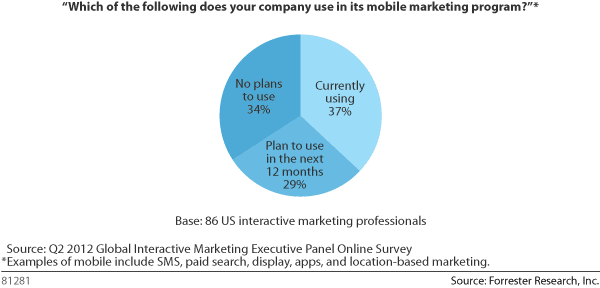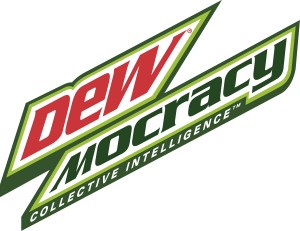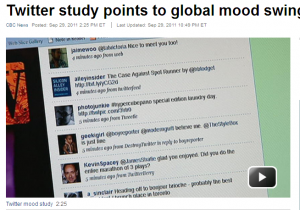To round off this blog, for now, I would like to touch on something I have briefly mentioned earlier in the blog post “Your wallet is being eaten” – The results from an Ernst and Young survey showed, that mobile is viewed as the future’s most important growth driver. Let’s dig a little deeper on this subject.
The report “Score Your Mobile Marketing Maturity” takes us down the road to the world of mobile. As today’s consumers are always addressable and are able to connect everywhere through their mobiles, one should think that this is something all companies would embrace. However, the report showed that 34% of the respondents said their company had no plans to launch mobile marketing programs. Several obstacles could explain this reluctance to engage in mobile, including lack of organizational support, no best practices to lean on, or ambiguity on how to measure mobile. The report suggests scoring your organization’s mobile maturity. I believe that this can be a helpful tool, but I can’t help thinking of something else, that could be equally rewarding.
 In general “Knowing your customers” has become a mantra, something you should strive towards. Tools as monitoring, social technographics and the consumer decision journey, are all telling us something about our customers. I wonder if a tool for assessing mobile usage patterns exists. The Forrester report states that “The bottom line is that as your customers’ mobile activity accelerates, so must your organization’s expertise”. I agree that this is true, however you could be more specific. What is meant by “mobile activity accelerates”? Can you score your customers’ mobile maturity?
In general “Knowing your customers” has become a mantra, something you should strive towards. Tools as monitoring, social technographics and the consumer decision journey, are all telling us something about our customers. I wonder if a tool for assessing mobile usage patterns exists. The Forrester report states that “The bottom line is that as your customers’ mobile activity accelerates, so must your organization’s expertise”. I agree that this is true, however you could be more specific. What is meant by “mobile activity accelerates”? Can you score your customers’ mobile maturity?
I imagine that target customer groups can vary a lot in their mobile behavior. If you could assess customer mobile maturity and then compare it with your own score, you could get a more precise idea of where you should be or go. Why not stay ahead of the development? Strategically this comparison would be of great value – instead of wandering around in the world of mobile somewhat blindfolded, you would have a direction to go, a visible target to aim at. After all, it is your customers who you should walk with, so in a sense, they decide the direction.








